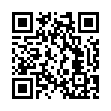parallel kinematics calibration (PDF)
File information
Title: Tri-Fold Pamphlet Template for DIN A4
This PDF 1.4 document has been generated by Writer / LibreOffice 3.6, and has been sent on pdf-archive.com on 20/04/2013 at 04:41, from IP address 151.230.x.x.
The current document download page has been viewed 1598 times.
File size: 253.39 KB (2 pages).
Privacy: public file


File preview
New Approach :
Calibration by means of
configuration space (= space
of joint states) transformations
based on finite elements.
Patent WO/2013/014056
Montanes GmbH
Kriegsstrasse 39,
DE-76133 Karlsruhe
Phone: +49 721 9145 997-10
Fax: +49 721 9145 997-90
Email: info@montanes.de
Geschäftsführer:
Dr. Johannes Gottlieb, Karlsruhe
This method stands for a
calibration of highest accuracy.
Amtsgericht Registergericht
Mannheim:
HBR 110296
USt. IdNr. DE231466676
CALIBRATION
of
Parallel Manipulators
State of the art
Calibration of parallel kinematics
is conventionally based on
parameter identification. It aims
at identifying the real geometric
parameters, that are mainly
responsible for pose deviations.
By comparing ideal poses with
measured poses real geometric
parameters are desired to be
identified in order to minimize
pose deviations.
This method works fine when
calibrating serial kinematics.
Applied to parallel kinematics this
method faces “improper posed
problems”.
“Applied to parallel robot this
method leads to calibration result
that are in general disastrous.”X1
1
Pandilov, Z. & Dukovski, V.
ACTA TECHNICA CONVINIENSIS
Bulletin of Engineering, Tome IV, 2011, pp.
77-84. ISSN 2067-3809
Innovation
The
transformation
of
the
Innovation
configuration space is not based
on the identification of real
geometric
parameters
that
cannot be identified, anyway.
In
contrast
to
that
the
transformed results of the
calibration measurements can be
used for pose corrections,
without any approximation errors
instead.
Deviations
of
geometric
parameters will not cause high
spectral deviations in joint space.
Therefore, an error compensation
based on finite elements is the
means of choice.
So, pose deviations based on
geometrical deviations can be
compensated in an excellent
manner,
see
the
diagram
besides.
Simulation results:
Typical results of simulation
Simulationsrechnung
Compensation of faulty
geometrical parameters
MPI Stewart Platform
Download parallel kinematics calibration
parallel kinematics calibration.pdf (PDF, 253.39 KB)
Download PDF
Share this file on social networks
Link to this page
Permanent link
Use the permanent link to the download page to share your document on Facebook, Twitter, LinkedIn, or directly with a contact by e-Mail, Messenger, Whatsapp, Line..
Short link
Use the short link to share your document on Twitter or by text message (SMS)
HTML Code
Copy the following HTML code to share your document on a Website or Blog
QR Code to this page

This file has been shared publicly by a user of PDF Archive.
Document ID: 0000101197.